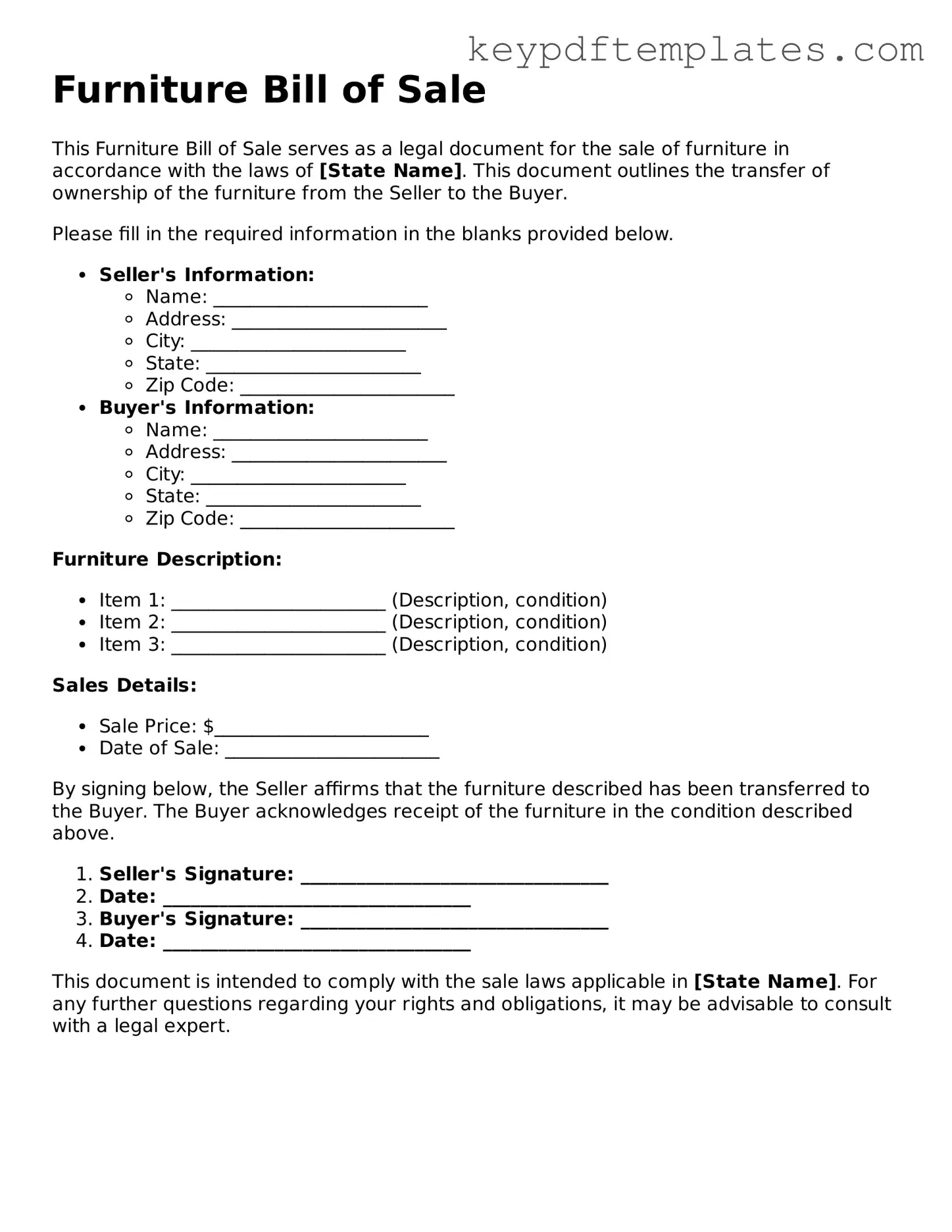Printable Furniture Bill of Sale Template
The Furniture Bill of Sale form is a legal document that records the transfer of ownership of furniture from a seller to a buyer. This form serves as proof of the transaction and outlines important details such as the item description, sale price, and date of sale. Having a properly completed bill of sale can protect both parties and ensure a smooth exchange.
Modify Document Online
